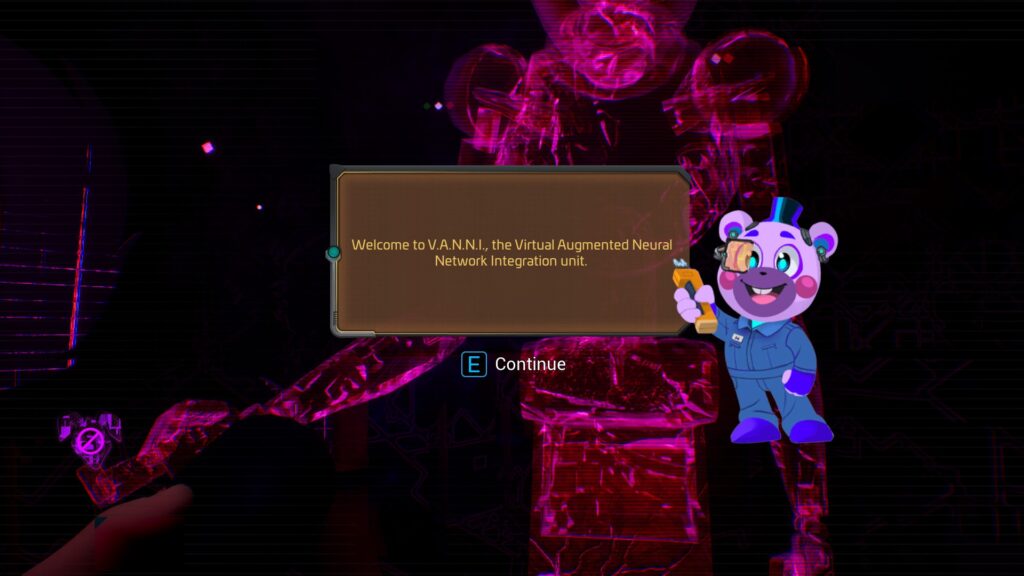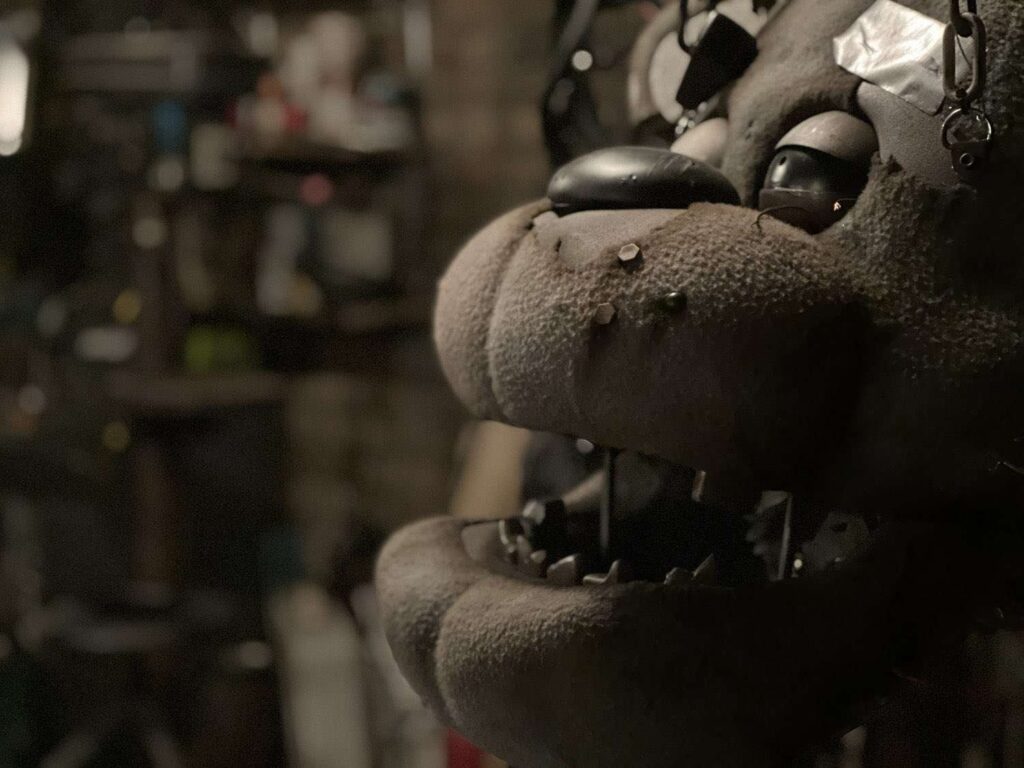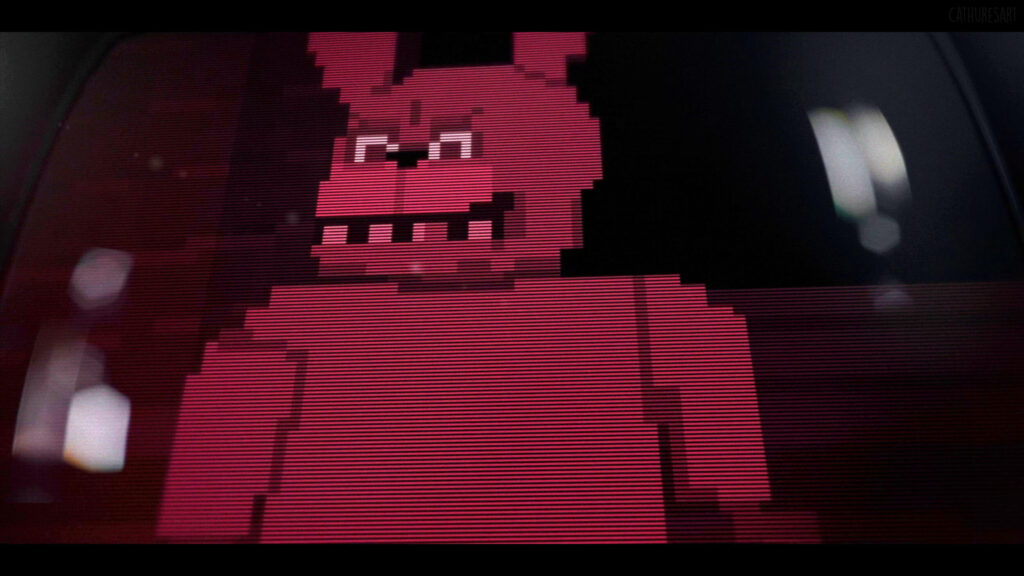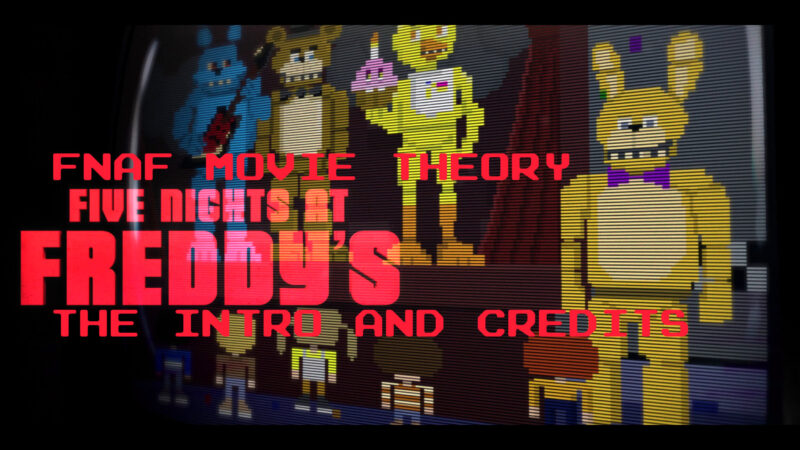Intro
Since watching the movie, I have been thinking about it almost non-stop. I spent around seventeen hours (or more) just going through the movie frame by frame checking the background for evidence and making sure I hadn’t missed anything along the way, this finally completed I’ve been in the mood to just sit down and do one big speculation article with all of my thoughts about the movie in for people to have a look through. It might be broken into parts for my sanity, so fair warning. I came out of my watch through with 800 screenshots.
This article will ABSOLUTELY have spoilers, before we begin, both in text and in screen shots, so if you are looking to avoid spoilers then consider yourself duly warned.
When it comes to balloon boy, you might hear me refer to the crying child or some theories around this, for more in depth (VERY in depth) discussions on this theory and the games themselves, please see the following multi part article series (which is still in progress), its not required reading to any degree but might give context later.
Part 1 – Timeline, House, Toys, I Will Put You Back Together, Fredbear
Part 2 – Foxy kid, The Bite, The Box, Lally’s Game, Balloon Boy, The Immortal and the Restless
Part 3 – The Real Jake, The Doll, The Magician
Part 4 – Dittophobia, Cake, Happiest Day, Caught in a Loop, Desk Man, Afton Family, Fear Research
Part 5 – Security Logbook, Balloon Boy, Log Book Conversations.
Glitches
This established, lets start at the beginning. The studio credits for Blumhouse and Universal are overlaid with visual glitches, this is probably just a simple nod to the interference with machines/cameras and lighting that the animatronics are capable of in the universe, but for existing fans it can be difficult not to look forward in time in the franchise to the “present day” where AI entities are very real. I do think it’s just a nod to the ghosts though, but I was excited anyway. There’s nothing immediately visible in these glitches either, though the screenshot below looks a bit like Spring Bonnie, I think this is just coincidence, the Blumhouse glitches are just standard filters.

The movie starts in a place that we return to multiple times, the security guard here (who does a great job) was originally supposed to be Markiplier, but we know as an audience that he’s doomed from the start, given the track record of security guards. It appears to only be 1AM on the clock and he’s lost his cool already, though we aren’t sure how far into his weekly shifts he is.
Nightmare Machine

The most important scene in this part of the movie to me is the Nightmare machine itself which is introduced outright. I’ve seen people say they “solved the movie easily” but not one of them could tell me what the nightmare machine is or what it does. Fans have a better shot at this, I think, understanding William’s precedents and motivations.
Firstly I’d like to take a look at this back room, I’ll call it Parts and Services for the purposes of this article, but it has been merged in identity with William’s “secret back room” mentioned in the games and books. I assume with a cinema audience it was simpler to blend the concepts than muddy the interpretation by having multiple rooms and sets for similar purposes. It contains the old parts of animatronics and his equipment, but is not all that secret at all, with a clear door that opens onto a hallway backstage.
Some of the below images are brightened for clarity.

As you can see in this image, this room has distinctive light fixtures, this might seem trivial but actually links the intro to this room, showing William bringing the kids back here specifically for whatever he got up to. We return to parts and services with both Mike, Max and Abby. The nightmare machine seems to be used on adults, with the spare springlock suit reserved for a child.

The Nightmare mask itself was immediately interesting to me. I saw some people just say it was a torture machine, but it appears to have a distinct purpose. The blades are around the mouth and nose, with one on the forehead or frontal lobe area. This is targeted destruction. The other element of remark is obviously the aperture-like eye lenses with their coloured insides. Red is used carefully in this movie and eyes are important. They carefully focus in on these “pupils” which expand and contract potentially in line with their captive.

It’s worth pointing out here something which I expect most people know already, but I don’t like to assume knowledge outright. This is the fact that your pupils dilate in response to heightened states of emotion, with fear being one marked example. No one actually knows for certain why this is, though there are many theories for this historical function. This is an intentional link as far as I’m concerned and a visual representation that we are seeing emotional states being measured in the subjects in the chair.

It’s possible that we are also seeing how Spring Bonnie’s eyes look from behind in these apertures. If you notice, when William takes off the mask, the eyes go out, when he puts it on, they light up again. It is possible there is a neural link of some sort at play between the suit and its wearer. This might sound anachronistic with the technology of the time but anyone familiar with the FNAF series knows that anachronistic, advanced technology that stretches the boundaries of possibility is the order of the day. Emotional energy is not something we can measure even in the modern day.
An example of this technology taken to an extreme is found in the VANNI mask in Security Breach : RUIN which utilizes (more advanced) neural connection but appears interestingly similar from behind.

It has red eye lenses, though perhaps a less DIRECT interface with the user.

Characters almost always get captured by the animatronics (usually Foxy) and wake up in the chair, which definitely ties it to nightmare and dream, both huge and dominating themes within the series as a whole. The obvious similarity to Nightmare himself as a character also cannot be ignored, as one of the main and more marked figures in the series with bright and striking red eyes and who relates himself to William’s misdeeds in UCN.

The other side of the mask shows us that it is a Freddy mask of some description, but it differs from the original in that it is both damaged around the ears and sides and has no whisker dots remaining but confirms we are looking at unmistakably a modified mask rather than a simple machine. This Freddy does however have clearly broken teeth. He also has upper teeth which Freddy does not.


Another comparision for this particular nightmarish iteration of Freddy is found in Help Wanted. William was doing experiments in the game timeline, and he was clearly also doing them here.

Kid’s Drawings
In the games the drawings are very important, they hold hints about the lore and about events surrounding Freddy’s, they feature with equal importance in the novels, with Michael (who in the novels is one of the dead children, not to be confused with movie Michael) gathering together the scattered children’s drawings in their spirit world in order to put their memories and sense of self back together. Children’s drawings are synonymous with memories and communications with the other world in FNAF and in the movie it is no different.

The children’s drawings are how Abby ultimately communicates to the children William’s true nature. I don’t think its coincidental either that she is demonstrated to be sensitive to the paranormal while also compulsively drawing pictures as a means of processing her day to day life. There is a link between imagination as a waking form of dreaming and communication with the dead. Not to get back into biology so soon after talking about the function of the eye, but it is worth bearing in mind that when we read, write or immerse ourselves in creative output that the way our brains process the action is almost indiscernible from if we were actually experiencing it (with a given degree of variation for individuals and their susceptibility to this kind of empathy ), dreams are a similar situation where an imagined scenario feels real to us. I don’t think this is a coincidence with such a potent through line of dreams, imagination and creative work.
In the games, almost all of the drawings are important to the storyline in some fashion, whether this is in the headings or the art itself, however this is primarily because it is drawn by Scott himself. Many of the drawings in the movie are (I suspect) by actual children, either the cast members or family members of the cast and crew, with their styles varying widely. For this reason I won’t go into too many of them too deeply, just mention the most interesting to me.

The central image is of course a narrative driver and shows the “yellow rabbit” with five of his victims, holding hands. As it turns out these children’s drawings, showing their friend the yellow rabbit is one of the things keeping the animatronics trapped. Of course for the movie this is rendered in a far more literal way to be accessible to the audience, but in the literary form it appears in almost another world, a flip side of sorts, where the dream image is changed and in turn changes the mind of the ghost kids. Movies are simply more limited in their narrative vehicles and it would be tough to really have the audience understand the dream moments in this way.
We still have constant dreams and interactions with the ghost children in these dreams, but as a narrative vehicle, Scott draws back from having the “solution” to the problem of memory lie in an ambiguous place.
When this artwork is changed by Abby, it turns the animatronics on William. But I think that it is important that Abby is the one who does this, not Mike, not Vanessa, but Abby, who time and time again has shown an ability to speak with the ghost kids and an affinity with the supernatural.

If we look closely at this picture, we can also see that the blonde kid has had their face pasted over someone else. This is obviously important as of all the children the blonde child seems the most ominous, often driving negotiations with Mike for his sister or removing obstacles in their way. He appears closest to William, or modified in some fashion by William. It’s clear to see why people are calling him “the vengeful spirit” but throughout this discussion I want to ask what this means and who we might well be looking at. For the moment though it’s worth also bearing in mind that this child has the same excessive smile as the yellow rabbit himself.

On the wall in a place where it is impossible to miss, there is a clear drawing of a kid called David, who has a roll of prize tickets. He is wearing a blue shirt and red pants. This is also incidentally the same colour combination that the pasted over kid with the yellow rabbit has. From a non-movie perspective, we actually have a character named David who is part of a large story arc, who is hit by a car and leaves behind his robot playmate. Whether this matters in the movie at all is still up for debate but it’s worth mentioning that this name has been seen before.

Above the middle picture there is also a drawing of Balloon Boy surrounded by HA HA HA HA HA to excess. Balloon boy is a figure who appears in this movie constantly, framed (as in the games) in a way that might be mistaken for comic relief, but I think that he is one of the haunted objects who is ultimately quite critical to the series itself.
The Intro

The intro is beautifully done in the atari-reminicent style that the between night minigames in the series are known for, albeit with a wider colour range and detail level. We see five kids at a party, including the blonde one and they watch the animatronics on stage.

The next scene shows us “purple guy” getting dressed in the dark, putting on the Spring Bonnie suit in sections. He goes out and begins to lead the kids away one by one. At this point its worth mentioning that “Matthew Lillard” and “Elizabeth Lail” are the only names here that turn purple. His eyes at this point are silver.

Fritz (red haired kid) is taken first, followed by Gabriel (orange striped kid), then Susie (blonde girl with blue eyes) and then the blonde kid whose name we don’t know. When he comes for the blonde kid, his eyes are red and his expression has become threatening.

Jeremy (blue shirt and dark hair) is the last and as previously stated, we see at this point that he is taking them into that strange back parts and services room with the chair thanks to the light fitting he passes.

Themes

The opening shots of the movie once again absolutely hammer home the themes of the movie (and the franchise) from the word go. We open on a shot of Mike’s nightstand which has sleeping pills, a book on Dream Theory and the familiar alarm clock set to 6AM. Next to everything else is a photo of his family, depicting two parents and a brother. Mike is just waking up and we also get a flash of his strange NEBRASKA poster on the ceiling. Mike is a little scruffy and his belongings reflect this too.

Family, Sleep, Dreams, Memories.
6AM is of course the end of a shift at Freddy’s and fans of the series would recognise this instantly.
Dream Theory

“Dream Theory” as a title that is also familiar to fans. It’s basically the name of a highly contentious theory regarding the FNAF 1-4 gameplay being the dream of the FNAF4 protagonist. As evidenced in my own discussion of FNAF4 in the introduction to this article, the truth as we can come to understand it is far more nuanced and ambiguous than simply “just a dream”.
The book also clearly has a labyrinth on it, comparing the brain to a maze. Mazes/Labyrinths are another constant companion through this franchise, with Henry/Cassette man himself creating one to ensnare the animatronics in “a labyrinth with no exit. A maze with no prize.”

Foxy also hunts the protagonist of HW through a maze as they hunt for four keys, and appears yet again in Princess Quest. This idea of a maze as a brain is extremely interesting to me.

Also lets not ignore the little rabbit on the publisher’s mark and that this is the “Fifth edition”, this isn’t a real published book (it has no author for instance), so every detail should be paid attention to as deliberate decision making.
Abby

Abby is first introduced to us here and the first time we see her she is defined to us by her room being absolutely full of children’s drawings and the fact that she sleeps in a den (UK term) or blanket fort.
Immediately for me this brought to mind the most obvious comparison possible.

The puppet also “sleeps” in a box, and also chooses to be surrounded by children’s drawings at the prize counter.
Abby, we can tell outright loves to draw and perhaps might be an unusual child, something which is proven out as we go through the movie. We’ll come back to her later on, but I think this first scene is important in asking ourselves what the movie writers wanted us to think about her. Almost all of her pictures feature her and Mike to the exclusion of everyone else, her imagination seeming to center affectionately around her life with her brother.

This is the immediate introduction we are given to the two main protagonists that the movie will follow and my first impressions when I saw these in the theatre were much the same as above. In the next part, I’ll go into this in a bit more detail, but I realise that this is already getting quite long! We’ll get through everything, I just realise there is SO much I want to talk about that it might take a little bit ;)
Next part below!
FNAF Movie Theory Part Two – Steve Raglan

